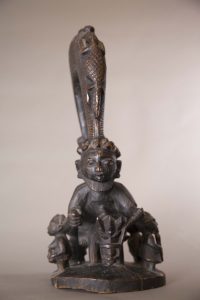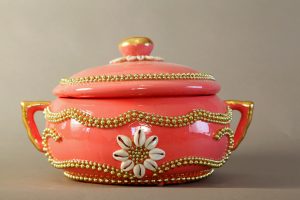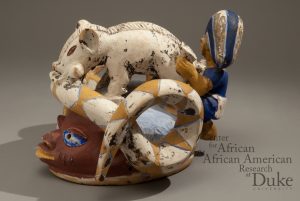Ayorinde, Christine. Afro-Cuban Religiosity, Revolution, and National Identity. Gainsville: University Press of Florida, 2004.
I found this source scanning through books in a section of the library that contained many titles relating to Santería. Much of the book discusses the political history of Cuba, and the diasporic mixing of religions that created Santería, however she also writes quite a bit about rituals of Santería, including animal sacrifice, healing, spiritual possession, and a small segment about what typically happens during initiation into the “cult” of Ochosi. While most of this book is about the politics of Cuba, and the history of Cuba, the Cuban revolution, and the influence of other countries on the development of Cuba, there are small gold mines of information relevant to my research throughout the book.
Ayorinde herself is hard to find information on, but she writes a little bit about her experiences in her books. She herself is Nigerian, yet her family in Nigeria doesn’t practice Orisha worship. According to personal anecdote, she didn’t know about orisha worship until her journey to Cuba, a country that fascinated her and helped her learn more about their culture, and in turn her own identity. She mostly sources her own interviews with Cuban people and her first hand experience of religious events. She is biased by growing up in a Muslim-Christian family, yet she seems dedicated to bringing the true stories of native Cubans to paper.
Manuel-Núñez, Luis. Santería Stories. New York: Spring Publications, 2006.
I found this source after a discussion with Pat Mardeusz, in which she recommended this book to me. It is a collection of “ancient stories” told in Santería. This book is basically a mythology book collecting legends of Santería all in one place. As a source, it is incredibly useful to me because it not only describes many of the legends of Santería including one with Ochosi, it also provides information on fetishes, power objects, dances, clothing, and offerings of every Santería orisha. This gives me a lot of insight not just into what rituals and altars to Ochosi would look like, but what might be seen on many altars and at many rituals performed in Santería. All in all, this is an invaluable source for my research.
Like many of my sources, there is not a lot of information on Luis Manuel-Núñez. He has written several books on Santería, most notably Santería Stories and Santería: Practical Guide to Afro-Caribbean Magic. He was born in Cuba, and lived there until the age of 10 until immigrating to the United States for his education. It is unclear whether or not he has ever practiced Santería himself, or if he returned to Cuba to do research on Santería after moving to the United States.
Sandoval, Mercedes Cros. Worldview, the Orichas, and Santería. Gainesville: University Press of Florida, 2006.
I discovered this source while looking through the section in the library with many books about Santería. This book covers the development and traditions of Santería, the orisha of Santería, and how Santería functions in the modern world. Sandoval writes at length about the rituals and traditions of many aspects of Santería such as priesthood, paraphernalia, music and dance, beliefs, and practices. She also writes about the orisha of Santería, including Ochosi. Sandoval makes a point to discuss the difference between Ochosi’s presence in Nigeria versus his presence in Cuba, and why he has lost importance in Cuban culture. This writing combined with her discussion of ritualistic practices make this a great resource for my research.
As an author, Sandoval is well known as a writer on Santería. She is a professor emeritus at the University of Miami. She spent her childhood in Cuba, and researched it throughout her teenage and adult years. She attended the University of Havana and the University of Florida, and has spent her whole life studying the religion and culture of Santería. While she is not a practitioner of Santería, she isn’t completely an “outsider”, due to the fact that she was raised in Cuba.




